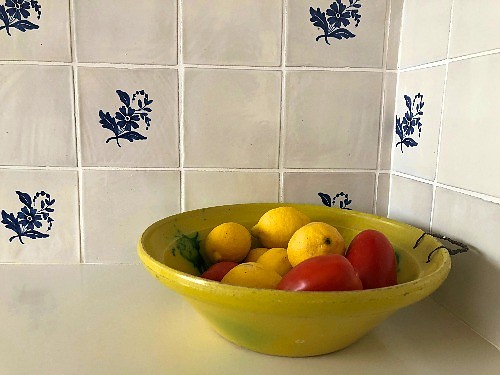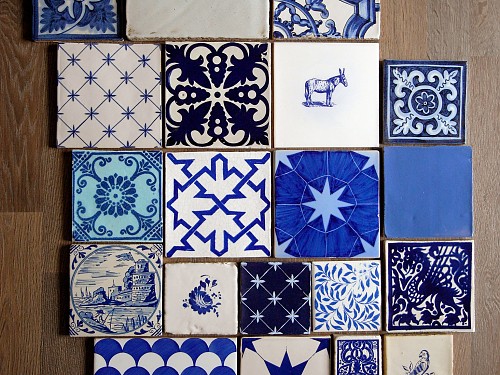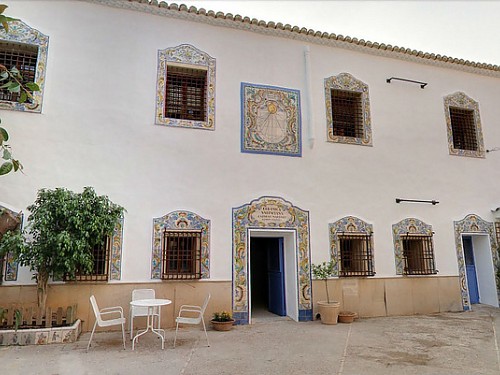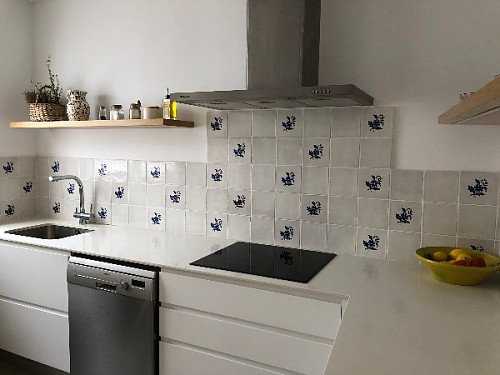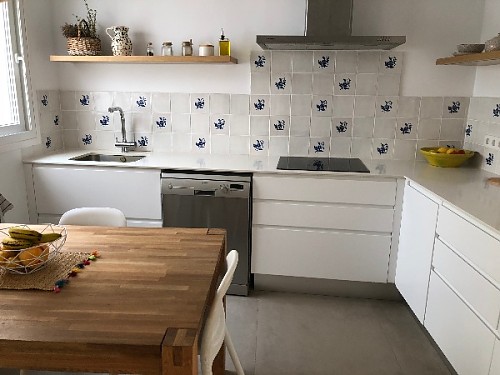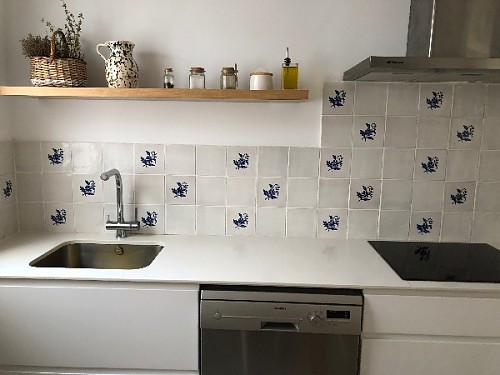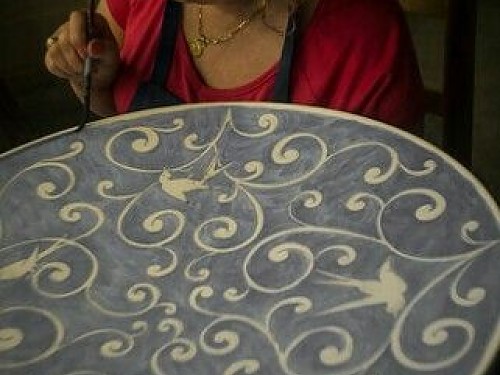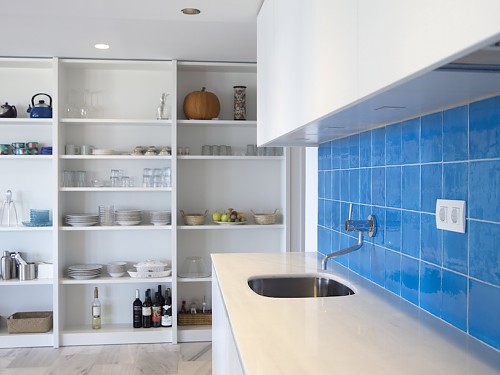Materials that make us fall in love (3): traditional Valencian tile
In this post we want to talk about a material that a priori needs no introduction: the traditional tile. However, the appearance of new, cheaper materials that have displaced it makes us want to stop for a bit to better explain and value this traditional wall covering that we love.
The first thing is to explain what type of tile we are talking about: we are referring to those tiles that are still made by hand and following traditional firing and glazing techniques. On the back it is made of baked clay and on the front, enamelled. It is usually square and, although there is a wide variety of colors, the most classic are those decorated in blue on white. The so-called "mocadoret" ones are also very typical, with half a tile in green or blue and half in white. Do they ring a bell? Do not confuse them with the hydraulic mosaic, very fashionable and very imitated at the same time, since it is a different technique.
And why do we like it so much?
Because it is 100% Mediterranean, it reminds us of our origins, those cool houses of our grandparents and because we like to claim the value of craftsmanship. If you are looking for a rustic-style decoration, the "imperfect" finish of this type of tile and its many possibilities will suit you like a glove.
But for lovers of the modern, pure lines and minimalism, tell you that these tiles work perfectly with a contemporary decoration. They can be the ideal counterpoint to a total white kitchen, like the examples you see. The kitchen with the tiles on the front with a flower print are from a reform in the Historic Center of Jávea, which we have already told you about here, here and here. And the other kitchen, also in Jávea but this time in Montañar, is not our project, but the Singularq architecture studio that we liked a lot. It is the one you see with turquoise tiles.
The supplier of the tiles for the two projects has been La Cerámica Valenciana by José Gimeno, a benchmark when it comes to this type of material. This workshop in Manises, which has been making ceramics in a completely handmade way since 1925, has us in love. They have a very extensive catalog of tiles, which you can see on their website with matt, brush, flower-type, antique colors... And what you can't find, they will paint for you ad hoc. His factory is also a museum that can be visited and a beautiful place where time seems to have stopped (you have a photo of the entrance). We recommend you visit it.
Beyond aesthetics, tile is a highly valued material for its hygienic qualities (it is easy to clean) and waterproofing. Hence its widespread use in kitchens and bathrooms.
And the price? Although it may seem like an expensive material (remember that they are handmade), traditional tiles can be used on a small scale, with a border or just one wall, to give a room a special touch. Sometimes it is not necessary to tile the bathroom and kitchen completely, as you can see in the previous examples. On the other hand, and as an advantage, it is not necessary to order these tiles by boxes or by the meter, as is the case with conventional stoneware tiles. They can be ordered by units, since they are made one by one, with less leftovers. In any case, if you need more footage, in traditional factories they usually also have semi-automated options in which the price decreases.
As you can see, we can be a bit nostalgic and at the same time practical by incorporating traditional tiles into our home. You dare?
Images:
- Tile mosaic, painting process and façade of the factory: La Cerámica Valenciana by José Gimeno.
- Turquoise kitchen: Singularq
- Blue flower kitchen: Cholbi Constructions
